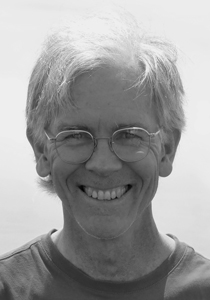Citation
Tom Sisson’s breadth of inquiry and approaches span volcanology, geochemistry, and petrology in a way that is truly rare. Tom is at once a creative and meticulous experimental petrologist, having done landmark work on the effect of water on the compositional evolution of magmas. He also is an innovative geochemical analyst, widely known for ground-breaking measurements on the preeruptive volatile contents of arc basalts. And he’s a prominent volcanologist, having made key discoveries in the study of Hawaiian and Cascades volcanoes while informing the public on their hazards. Tom is also a field geologist of exceptional talent, befitting the challenges of geologic mapping in the Sierra Nevada and at volcanoes such as Mount Rainier, arguably the volcano that poses the highest risk to communities in the conterminous United States. This background has guided his keen insights into magmatic processes from laboratory experiments and measurements anchored in ground truth from the field. Moreover, Tom’s Rainier papers serve as real-world examples of quantitative geoscience with societal relevance through application to volcano hazard evaluations. Tom’s work on the formation of granites, specifically how many steps are involved to create crustal distillates from primary mantle-derived basalt, will shape research and thinking into the next decade. Tom’s knowledge, gravitas, and generosity are also legendary. He is a caring mentor to young scientists, commonly at their side at meetings, listening patiently and then generously working through their problems, with considerable seriousness and substance though not without a sense of humor, helping to inform and inspire their science. When Tom speaks, it is with unusual clarity and confidence, and everyone listens. It is difficult to think of a modern scientist more deserving of Bowen’s legacy than Tom Sisson, in his foundational, high-impact, and diverse contributions to our understanding of magmas, from their origin to eruption.
—Terry Plank, Lamont Doherty Earth Observatory, Palisades, N.Y.
Response
Dear Terry, thanks for your considerate words and thanks to the anonymous colleagues who championed my nomination and to the Volcanology, Geochemistry, and Petrology awards committee. When I was a Stanford undergrad, Bob Compton assigned us Bowen’s The Evolution of the Igneous Rocks. I was convinced, and shortly after graduating, I bought a copy in New Zealand, where I was climbing in the Southern Alps. That copy accompanied me during my “living out of a VW bus and climbing” period, and I was slow to unlearn the few areas where Bowen was wrong. I’ve benefited from numerous inspiring mentors and colleagues, but Jim Moore and Tim Grove stand out. Jim gave me the precious opportunity to collaborate with him mapping a swath of U.S. Geological Survey (USGS) geologic quadrangles across the Sierra Nevada batholith, as well as studying the Mount St. Helens directed blast. Jim never worried too much if he was working on petrology, volcanology, glacial geology, or …, and I found this a good model to follow. Fieldwork only goes so far, so I went to work with Tim at the Massachusetts Institute of Technology because he addresses major scientific issues using the highest-quality experiments guided and tested insofar as possible by field observations. Having mapped numerous mafic intrusions in the Sierra, it seemed obvious and inescapable to me that basaltic arc magmas are wet (yes, this was once not known). We showed experimentally how this explains many aspects of arc magmas, shortly confirmed by my early ion probe measurements on basaltic melt inclusions. The USGS called me back, where I’ve continued mostly studying arc petrogenesis and hazards. The in-depth, place-based studies fostered by the USGS reveal how magmatic systems are at the same time complex and simple. Understanding controls on magmatic volumes, locations, and timing are some of the challenging and fascinating issues that I look forward to seeing addressed.
—Thomas Sisson, California Water Science Center, U.S. Geological Survey, Menlo Park
Citation: AGU (2015), Sisson receives 2015 N. L. Bowen Award, Eos, 96, doi:10.1029/2015EO036217. Published on 2 October 2015.
Text © 2015. The authors. CC BY-NC 3.0
Except where otherwise noted, images are subject to copyright. Any reuse without express permission from the copyright owner is prohibited.

